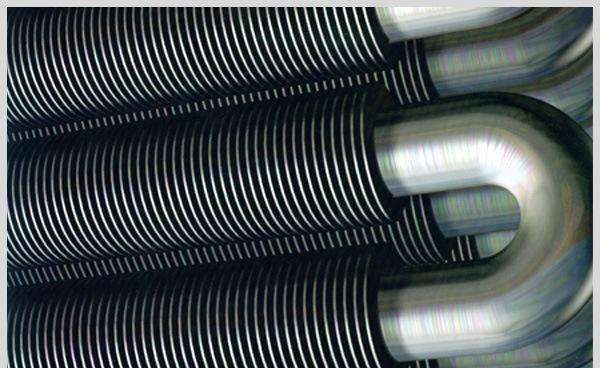Lord Fin Tube--Consideration for fin parameter selection
The selection of fin parameters is crucial in designing an effective heat exchanger system, as these parameters significantly impact heat transfer performance and overall efficiency.
Here are some key considerations for selecting fin parameters:
1. Material Selection:
- Choose a material with good thermal conductivity for the fins to enhance heat transfer.
- Consider factors such as corrosion resistance, cost, and manufacturability.
2. Fin Thickness:
- Thinner fins generally offer higher heat transfer rates but might be more susceptible to damage.
- Thicker fins may be more robust but can reduce heat transfer efficiency.
3. Fin Height:
- Fin height affects the surface area available for heat transfer.
- Higher fin heights generally increase the heat transfer area but may also lead to higher pressure drops in fluid flow.
4. Fin Spacing:
- Fin spacing influences the air or fluid flow between fins.
- Closer fin spacing can lead to higher heat transfer rates but might also increase air pressure drop.
- Consider the practical constraints of manufacturing and cleaning.
5. Fin Type:
- Choose the appropriate fin type for the application. Common types include straight fins, offset fins, and wavy fins.
- Different fin types have varying effects on heat transfer and pressure drop.
6. Fin Configuration:
- Consider the arrangement of fins (parallel, staggered, or in-line) and how it affects heat transfer performance.
- Staggered arrangements often provide better heat transfer characteristics.
7. Material Compatibility:
- Ensure that the fin material is compatible with the working fluid and the environment.
8. Surface Coating:
- Apply coatings to fins to improve corrosion resistance, enhance thermal emissivity, or prevent fouling.
9. Cost Considerations:
- Balancing performance requirements with cost constraints is essential.
- Evaluate the trade-offs between material cost, manufacturing complexity, and heat transfer efficiency.
10. Operational Conditions:
- Consider the operating temperature range, pressure, and other environmental conditions.
- Ensure that the selected fin parameters can withstand the operational demands without degradation.
11. Manufacturability:
- Evaluate the ease of manufacturing the chosen fin design.
- Complex fin geometries may be challenging and costly to produce.
12. Optimization:
- Use mathematical models, simulations, or experimental data to optimize fin parameters for the specific application.
- Iteratively refine the design based on performance feedback.
Its often advisable to work with thermal engineering software or consult with experts to fine-tune the fin parameters based on the specific requirements of your heat exchanger application. Additionally, prototyping and testing may be necessary to validate the chosen fin parameters in real-world conditions.


